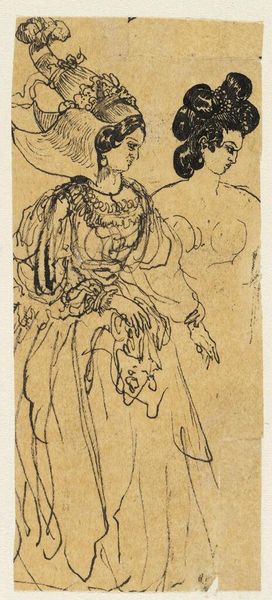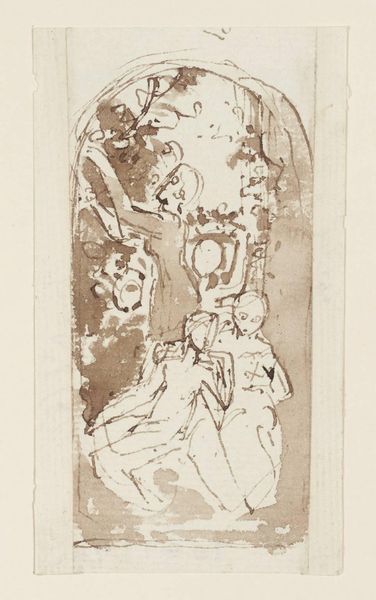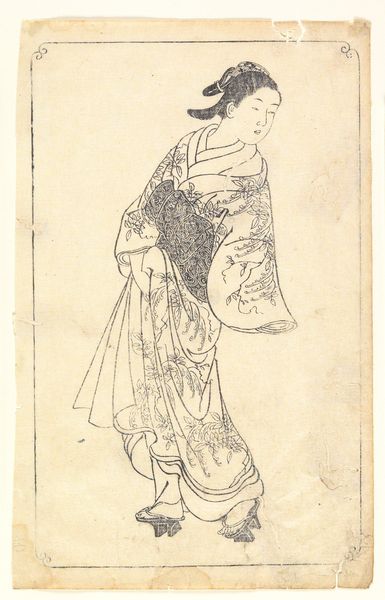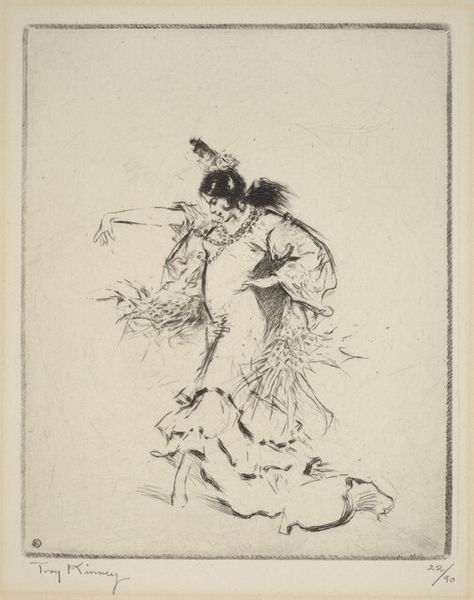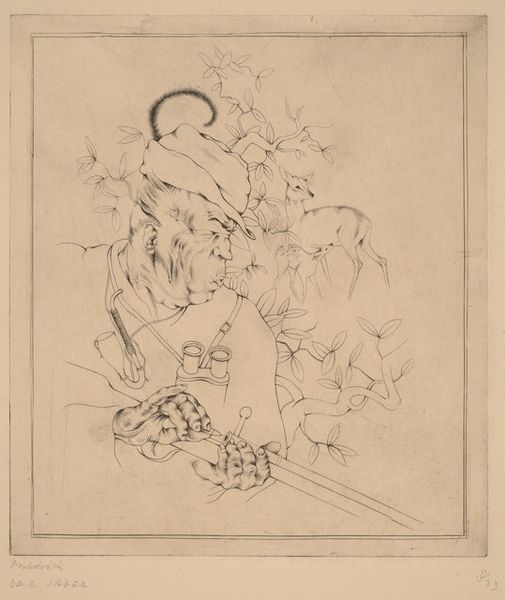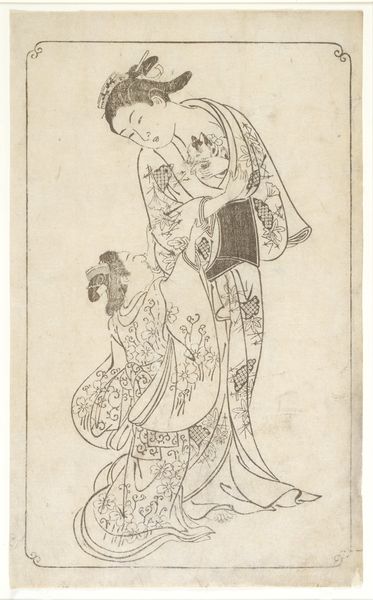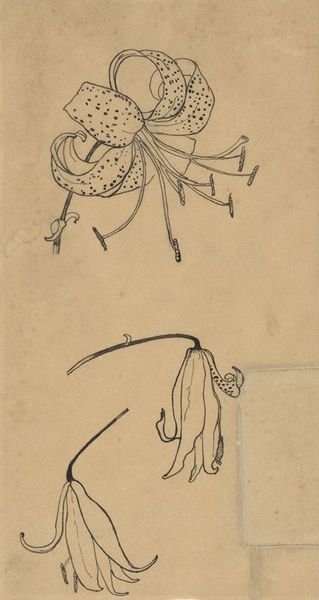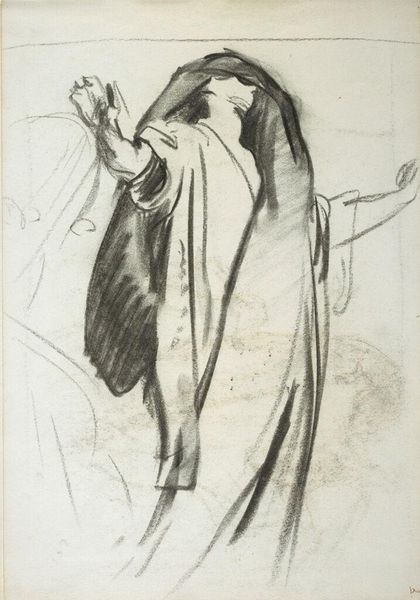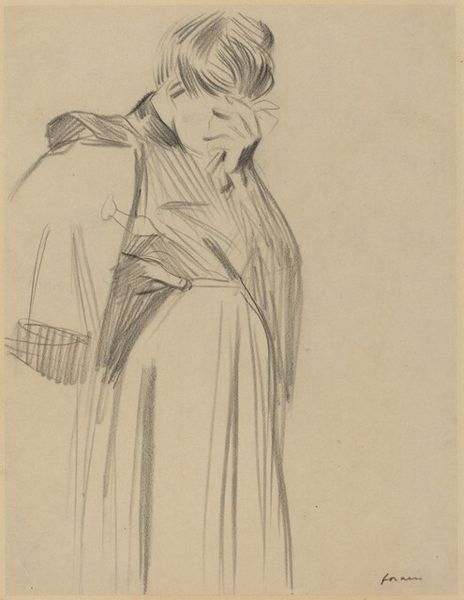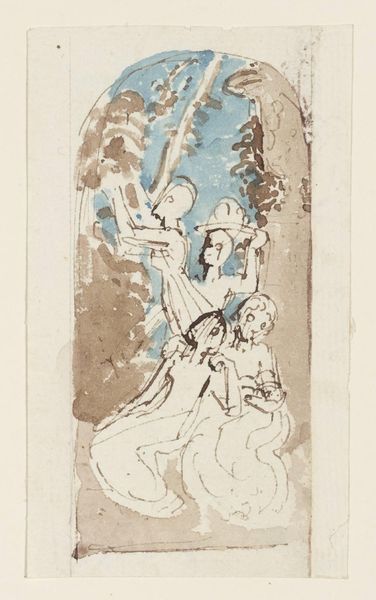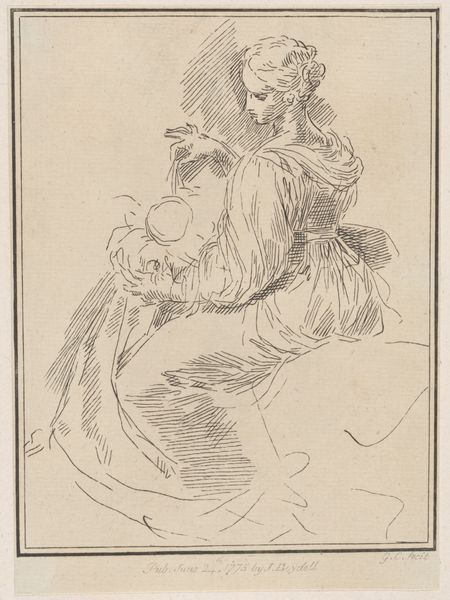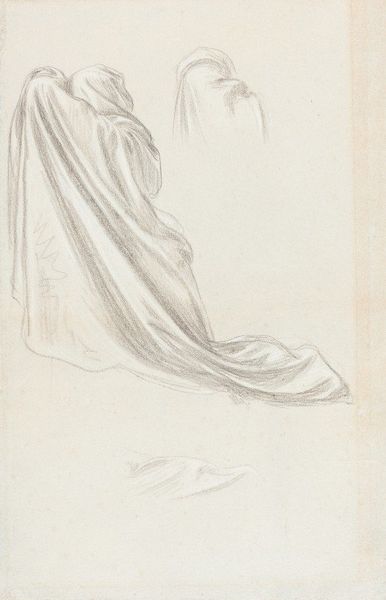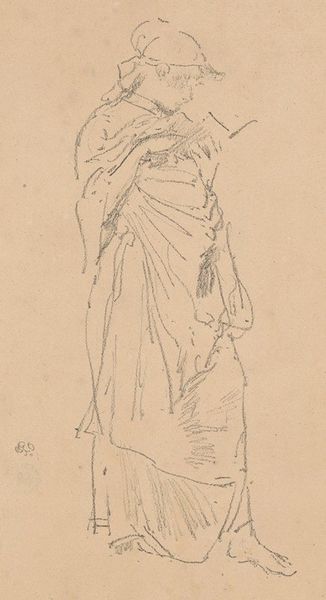
Copyright: Public Domain: Artvee
Editor: This is "Révérence," a print, an etching in fact, created by Carl Larsson in 1896. The pale yellow and the figure bowing downward gives it an antique feel. What social commentary is captured in such a simple image? Curator: This work offers a glimpse into the socio-political climate of the late 19th century, a period marked by rigid social hierarchies and prescribed gender roles. Larsson, celebrated for his depictions of domestic bliss, here presents a formal gesture – a bow – loaded with implications. Who is she bowing to, and what power dynamic does that represent? Editor: Perhaps the etching process itself speaks to these themes? It's so precise. Curator: Absolutely. The etching process, requiring meticulous preparation and controlled execution, mirrors the strict codes of conduct governing social interactions at the time. Furthermore, prints are inherently reproducible. Could Larsson be commenting on the widespread dissemination of ideals regarding proper behaviour, particularly for women? Consider the role of popular imagery in reinforcing social expectations. Editor: I see. The choice of a print, compared to painting, could represent a democratisation, even though what is depicted are not democratic ideas. What do you make of the large yellow dress and dark bows? Curator: The voluminous dress, fashionable at the time, serves as a visual marker of status, but it's the downward gaze that truly captures my attention. Does it denote deference, submission, or perhaps even a calculated performance of social expectations? Are the dark bows a symbol of mourning? The image evokes questions rather than providing answers, thereby sparking dialogue, and allowing viewers like ourselves to interpret the message within a social framework. Editor: Thank you for contextualizing it that way. I initially just saw a pretty image, but seeing the work in relation to social structures opens it up a great deal. Curator: Indeed, appreciating art within its historical and cultural context allows us to engage with its complex layers of meaning and its enduring relevance to our own world.
Comments
No comments
Be the first to comment and join the conversation on the ultimate creative platform.
